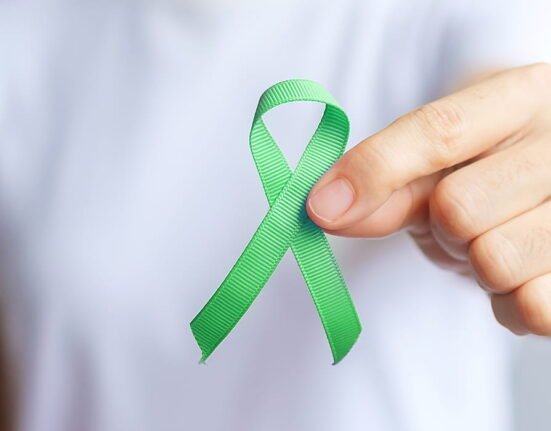Friendship has been referred to as one of the simplest pleasures in life, yet with the passage of time, getting to know new friends becomes mysteriously complex. As children, we may connect through a game or a toy; as students, friendships were easy during late-night study or coffee shop hangouts. But as adulthood unfolds, the wide-open river of social connection narrows to thin streams. Both research and lived experience verify the same truth: even though the need for companionship doesn’t shift, the conditions for its creation shift radically with age. To understand this deeply, we must look both inward—at changing priorities, emotions, and identities—and outward, at how society, time, and culture reconstitute our potentialities for friendship.
Read More: Friendships Across the Lifespan: What Keeps Relationships Strong Over Time
Priorities Changing: Time Appears Shorter, Choices More Limited
One of the most profound answers to why adults can’t make new friends is that we perceive time differently. Laura Carstensen (1992) created the socioemotional selectivity theory, which argues that as people grow older and are more attuned to life’s end, they prioritise emotionally fulfilling relationships and do not prize increasing social circles. This is why a child would naturally be buddies with everybody in their grade, while a 40-year-old would prefer to spend heavily on a small group of familiar friends instead of repeatedly starting all over with new individuals.
This selectiveness is not a flaw but a natural adjustment. Older individuals desire familiarity, dependability, and emotional depth and not novelty. But while this protects them from shallow relationships, it also decreases the chance of spontaneous friendships. To fill the gap, one move is to consciously enlarge the circle of tolerance—accommodating new commitments while still maintaining deeper ones.
The Weight of Responsibilities: Careers, Families, and Invisible Walls
The second main barrier is the enormous number of adult responsibilities. Jeffrey Arnett (2000) referred to the period of emerging adulthood as one of exploration and connection, but careers, caring, and financial responsibilities consume enormous amounts of time by midlife. Melissa Milkie and colleagues’ research (2004) drew attention to how adults’ socialising time is significantly reduced by the “time squeeze” of working and caring for family.
When weekends are spent on errands, kids’ activities, or sleep deprivation, the casual interactions that sustain friendships fall by the wayside. Even reaching out to a new friend becomes more of a duty than an enjoyment. The result is not a loss of affection for friendship, but a lack of space to develop it.
To avoid this, experts suggest integrating connection into the groove of daily routines. Walking clubs with neighbours, coffee breaks with coworkers, or volunteer work with like-minded groups can contrast responsibilities with opportunities for novel social bonds. Adulthood friendships are most likely to thrive when they do not compete with but exist along with the functional needs of life.
Read More: How Withholding Affection Can Ruin Your Relationship
Mobility and Social Displacement: Friends Lost Along the Way
With more and more globalisation, more people move to seek education, work, or marriage, and they leave behind pre-existing support structures. Robert Putnam (2000), in his classic book Bowling Alone, documented how geographic mobility and the breakdown of public institutions have destroyed natural opportunities to make friends. Contrary to the older generations that preferred staying in the same towns, today’s adults have the mobility to traverse cities or countries, sometimes creating cycles of gaining and losing social groups.
This displacement creates isolation even for individuals who are in the presence of co-workers or individuals with whom he is familiar. It was found by Shigehiro Oishi (2010) that individuals who tended to travel a lot had poor community ties and were more likely to lose friends. The mobility of modern times creates flexibility in us but ruins the stability upon which strong foundations are laid.
The antidote is intentionality: making concerted attempts to sustain long-distance friendships through technology and, concurrently, planting roots in the new location through local life, neighbourhood events, or club participation. As mobility scatters, intent rituals re-bond.
Read More: Why Adult Friendships End: Emotional Compatibility and Life Changes
Emotional Guardrails: Fear of Vulnerability and Rejection
Another barrier is one of the inside kind, not the outside variety—the fear of vulnerability. Brené Brown (2012) pointed out in her study on vulnerability that real relationships are built when people allow themselves to be visible in their humanness. But being an adult seems to gear us up to present ourselves as respectable versions of ourselves: competent employees, good parents, level-headed persons.
This protection makes it more difficult to be vulnerable, and hence friendship superficial. Research by Debra Umberson and Jennifer Montez (2010) revealed that adults who are in denial about emotional openness reported having less social support and weaker connections. The twist is that even though we are hungry for authenticity, we fear that being too open may lead to rejection.
To shatter this, little is required: recognising struggles, asking for help, or sharing personal experiences in safe spaces can dismantle the layers of armour. As Brown’s work indicates, friendship emerges not from perfection but from the desire to be imperfect together.
Read More: How To Deal with Rejection? Insights from an Expert
The Shrinking of Social Arenas: Fewer Natural Meeting Grounds
Schoolyards, playgrounds, and universities are built on combining socially, yet adulthood has no equivalent grounds. When we work, social interaction is in workplaces, where competition, hierarchy, or barriers restrict genuine friendship. Putnam’s (2000) proof again applies here: declining civic participation finds fewer bowling leagues, choruses, or block parties where strangers become friends.
Even technology, as much as it unites us virtually, tends to increase isolation in that it replaces face-to-face contact. A Pew Research Centre report (2015) revealed that while social media extends weak ties, it rarely provides the kind of intimacy that benefits well-being.
The trick is to recreate social spaces actively. Clubs in community centres, hobby-based meetups, cultural clubs, and even online-to-offline groups can offer substitutes for youth’s natural friendship incubators. The experiment may feel unnatural in the first place, but regular exposure in a safe, shared space is the arena from which profound relationships are born.
Read More: Is Emotional Intimacy Key to a Lasting Relationship?
Identity and Belonging: The Question of “Do I Fit In?”
As people become older, their identities solidify in terms of politics, values, and lifestyle. While this is stabilising, it also makes it harder to make new friends since adults are less inclined to compromise on fundamental differences. Mark Granovetter’s (1973) work showed the power of “weak ties”—friends of friends who expose us to new networks—but to maintain them demands an embracing of difference, something adults do not always do.
Moreover, in a 2016 Pew Research survey, the pattern of rising ideological “sorting,” whereby people associate largely with those who hold similar worldviews, was demonstrated. This decreases the likelihood of friendship among people from different backgrounds.
Steps in moving beyond this include the practice of “curious engagement”. Hearing without judgment and discovering common ground in the midst of difference. Adults regularly recover friendship through working in intergenerational or cross-cultural groups, where boundaries of identity relax through shared action. Belonging now becomes not “who thinks like me” but “who experiences this moment with me.”
Health and Emotional Energy: When the Body Shapes the Bond
Physical and emotional well-being also affects friendship formation. Julianne Holt-Lunstad and others (2010) demonstrated that social isolation increases mortality rates equivalent to obesity or smoking, underscoring the pivotal role of friendship. Yet poor health has the effect of reducing the very capacity to seek or maintain social relationships. Chronic sickness, chronic fatigue, or depression make it harder to approach someone to speak to or go to an event.
For instance, Thomas Cacioppo (2008), in his study on loneliness, found lonely individuals to be less likely to trust others, and therefore loneliness bred loneliness. To break this cycle requires both self-nurturing and social support scaffolding. Seeking therapy, health-support groups, or friendship development under circumstances attuned to one’s physical or emotional borders. In certain instances, shared challenges become empathy bridges.
Read More: 10 Psychological Reasons Behind Chronic Fatigue
Practical Steps: Relearning How to Befriend
While challenges exist, there are concrete steps adults can take to reclaim the art of friendship.
- Rethink friendship as small acts: Friendship doesn’t require hours; it can bloom from five-minute greetings, exemplified in studies of the workplace by Teresa Amabile (2011), where micro-moments of contact improved morale.
- Celebrate built-in spaces: Book clubs, fitness classes, or volunteer work repeat the opportunity for contact that fosters trust.
- Practice vulnerability in doses: One personal fact at a time creates secure intimacy without burden.
- Seize intergenerational connections: Cross-age friendships, as evidenced in research by Karl Pillemer (2015), create crossover enrichment and cut loneliness.
- Tend to existing weak bonds: A kind note to a former colleague or classmate can revive an acquaintance and sometimes bloom into renewed friendships.
Conclusion: Friendship as an Act of Hope
Building friendships as we grow up is definitely more challenging, but it is not impossible. It takes navigating through shifting priorities, heavy burdens, emotional phobias, and societal changes. In all these adversities is a deeper challenge: to look at friendship as not a matter of convenience.
Carstensen, Putnam, Holt-Lunstad, and others’ work reminds us that social connection is not a luxury but a lifeline. Friendships formed in adulthood are fewer, but richer—a wisdom honed by experience, a vulnerability strengthened by risk, and one maintained by intention, not circumstance. By consciously leaving space for connection, embracing small increments of openness, and remaining curious about others, we can rewrite the narrative of isolation into one of belonging.
FAQs
1. Why has it become harder to make friends in the modern age?
Making friends in the modern age is harder due to a combination of busy adult lives with less time for socialising, increased vulnerability and fear of rejection when forming new relationships. And the decline of naturally occurring social environments like school and tight-knit neighbourhoods.
2. How evolved is the modern way of interaction when compared to its traditional counterpart?
Modern interaction is vastly more evolved than its traditional counterpart in terms of speed, reach, and convenience, largely due to the advent of digital technology. While traditional methods emphasised deep, context-rich, face-to-face exchanges, modern interaction offers new capabilities for global connection and information sharing.
3. How can pure and secure friendship still be retained in the present and future?
In an increasingly busy and digital world, retaining pure and secure friendships requires intention, effort, and clear communication. By focusing on quality interactions, adapting to change, and nurturing trust, you can maintain deep, lasting bonds with your friends.
References +
Amabile, T. M., & Kramer, S. J. (2011). The Progress Principle: Using Small Wins to Ignite Joy, Engagement, and Creativity at Work. Harvard Business Review Press.
Arnett, J. J. (2000). Emerging adulthood: A theory of development from the late teens through the twenties. American Psychologist, 55(5), 469–480.
Brown, B. (2012). Daring Greatly: How the Courage to Be Vulnerable Transforms the Way We Live, Love, Parent, and Lead. Gotham Books.
Cacioppo, J. T., & Patrick, W. (2008). Loneliness: Human Nature and the Need for Social Connection. W.W. Norton & Company.
Carstensen, L. L. (1992). Social and emotional patterns in adulthood: Support for socioemotional selectivity theory. Psychology and Ageing, 7(3), 331–338.
Granovetter, M. S. (1973). The strength of weak ties. American Journal of Sociology, 78(6), 1360–1380.
Holt-Lunstad, J., Smith, T. B., & Layton, J. B. (2010). Social relationships and mortality risk: A meta-analytic review. PLoS Medicine, 7(7), e1000316.
Milkie, M. A., Mattingly, M. J., Nomaguchi, K. M., Bianchi, S. M., & Robinson, J. P. (2004). The time squeeze: Parental statuses and feelings about time with children. Journal of Marriage and Family, 66(3), 739–761.
Oishi, S. (2010). The psychology of residential mobility: Implications for the self, social relationships, and well-being. Perspectives on Psychological Science, 5(1), 5–21.
Pew Research Centre. (2015). Social Media and Friendship. Washington, DC.
Pew Research Centre. (2016). Partisanship and Political Animosity in 2016. Washington, DC.
Pillemer, K. (2015). 30 Lessons for Loving: Advice from the Wisest Americans on Love, Relationships, and Marriage. Hudson Street Press.
Putnam, R. D. (2000). Bowling Alone: The Collapse and Revival of American Community. Simon & Schuster.
Umberson, D., & Montez, J. K. (2010). Social relationships and health: A flashpoint for health policy. Journal of Health and Social Behaviour, 51(1_suppl), S54–S66.













Leave feedback about this